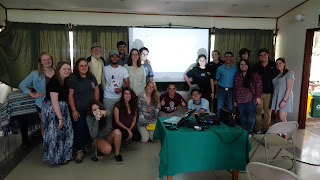A long time ago in a land far far
away, there was a small country called Costa Rica. It had been settled by the
evil Spanish Conquistadors in 1565. Although the evil Spanish came searching
for gold and the treasures of the New World, they found themselves in a land
without labor and without the promised bounty that they sought. Therefore, in
1823, the Central Americans gained their independence peacefully and formed the
Central American Republic.
During Costa Rica’s early
independence came a period of civil unrest and political struggle between the
liberals and conservatives. In the midst of the political instability came the
rise of the oppressive Tinoco brothers, known for their ruthlessness and
cruelty. After years of military rule, however, Federico Tinoco stepped down
from his throne following the assassination of his brother and mass protests by
women and teachers alike. Soon after came an Amendment to the Constitution that
ensured the popular election of public officials, leading Costa Rica down the
road to democracy, which gained strength after the introduction of a social
security system and labor code by the Communist Party and the Costa Rican
Workers’ Confederation in the 1930’s.
However, not everything would be
smooth sailing for Costa Rica. In 1948, Costa Rica endured a revolution after a
scandalous and fraudulent election. In a nation divided, two sides appeared; the
Figueristas and the Calderonistas. Eventually, Figueres won the war and
dissolved the Costa Rican army, giving full voting rights to women and blacks
and creating a system to ensure fair elections for everyone! YAY. This set the
political standard that would follow in the years to come.
Since these times, Costa Rica’s
democracy has grown and strengthened into the great nation it is today. Although
it still has room for improvement, as do all nations, its system of democracy
is well on its way to becoming a emblem of stability in Latin America.
Pura Vida!


No comments:
Post a Comment